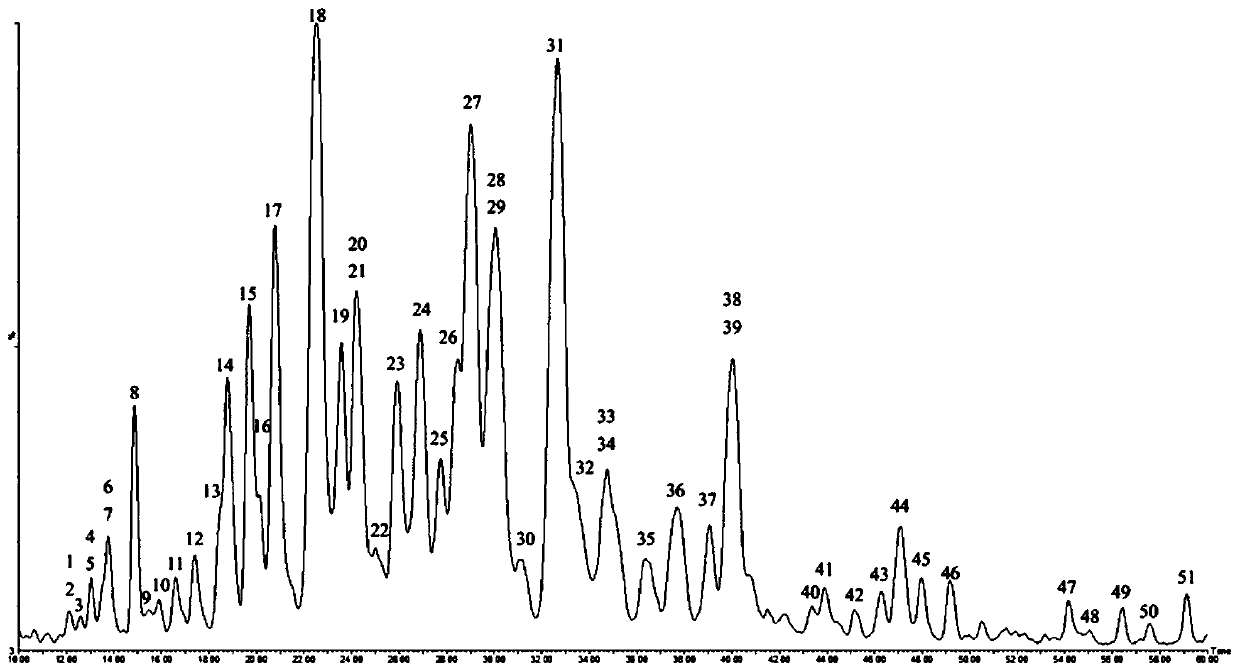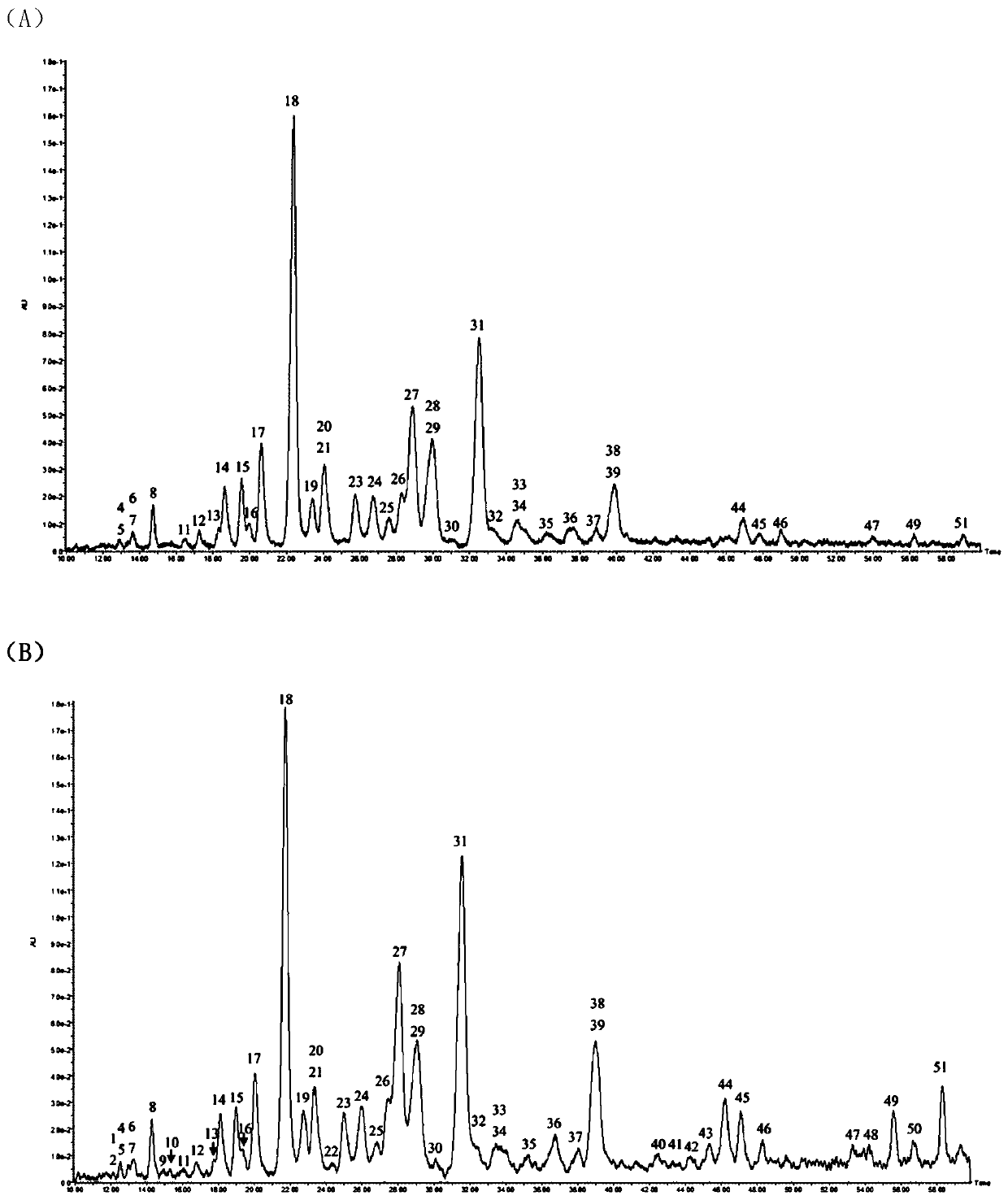UPLC-UV-QTOF-MS/MS method of quantitative detection of triterpenoid saponins in Camellia sinensis (L.) O.Kuntze
A UPLC-UV-QTOF-MS, quantitative detection technology, applied in measurement devices, instruments, scientific instruments, etc., can solve the problems of high detection results, large sample requirements, long time consumption, etc., to achieve accurate quantitative results and sample requirements. Low volume and high sensitivity
- Summary
- Abstract
- Description
- Claims
- Application Information
AI Technical Summary
Problems solved by technology
Method used
Image
Examples
Embodiment 1
[0034] Example 1: Quantitative detection of saponin in tea tree seed extract
[0035] (1) Sample preparation:
[0036] The tea seeds are dehulled, the seeds are ground and passed through a 20-mesh sieve, 70% methanol is added in a ratio of 1:15, and the mixture is refluxed for 5 hours at 70° C., and then filtered while hot to obtain a crude extract. The crude alcohol extract is concentrated by rotary evaporation, lyophilized into a powder in a vacuum freeze dryer, and stored in a refrigerator below -40°C for later use. The sample is made into a 60% methanol solution (2mg / ml) and passed through a 0.22μm filter membrane to obtain the test solution.
[0037] (2) Sample detection:
[0038] AcquityTM ultra high performance liquid chromatograph (Waters, USA), Triple TOF 5600+ time-of-flight mass spectrometer, ACQUITY UPLC HSS T3 chromatographic column (1.8μm, 150mm×2.1mm i.d., Waters) chromatographic column was used.
[0039] Chromatographic conditions are: mobile phase A (0.1% formic acid / ...
Embodiment 2
[0046] Example 2: Quantitative detection of the total saponin fraction of tea tree seeds
[0047] (1) Sample preparation:
[0048] The tea seeds are dehulled, the seeds are crushed, passed through a 20-mesh sieve, 70% methanol is added in a ratio of 1:15, and extracted at 70°C for 5 hours under reflux, and then filtered while hot to obtain a crude extract. The crude alcohol extract is rotated Concentrated by evaporation (45-60°C). After concentration, the extract is extracted with n-hexane, ethyl acetate and n-butanol three times in sequence. The n-butanol phase is collected and concentrated under reduced pressure to obtain the extract.
[0049] Use D-101 macroporous resin for purification. After the sample is adsorbed, it is eluted with distilled water, 30% ethanol, 50% ethanol, and 70% ethanol successively. The elution volume of each elution solvent is 2 column volumes, the flow rate is 3ml / min, and finally the layer is washed with 95% ethanol. Analyze the column for next use. ...
PUM
| Property | Measurement | Unit |
|---|---|---|
| ion source temperature | aaaaa | aaaaa |
Abstract
Description
Claims
Application Information
 Login to View More
Login to View More - R&D
- Intellectual Property
- Life Sciences
- Materials
- Tech Scout
- Unparalleled Data Quality
- Higher Quality Content
- 60% Fewer Hallucinations
Browse by: Latest US Patents, China's latest patents, Technical Efficacy Thesaurus, Application Domain, Technology Topic, Popular Technical Reports.
© 2025 PatSnap. All rights reserved.Legal|Privacy policy|Modern Slavery Act Transparency Statement|Sitemap|About US| Contact US: help@patsnap.com



